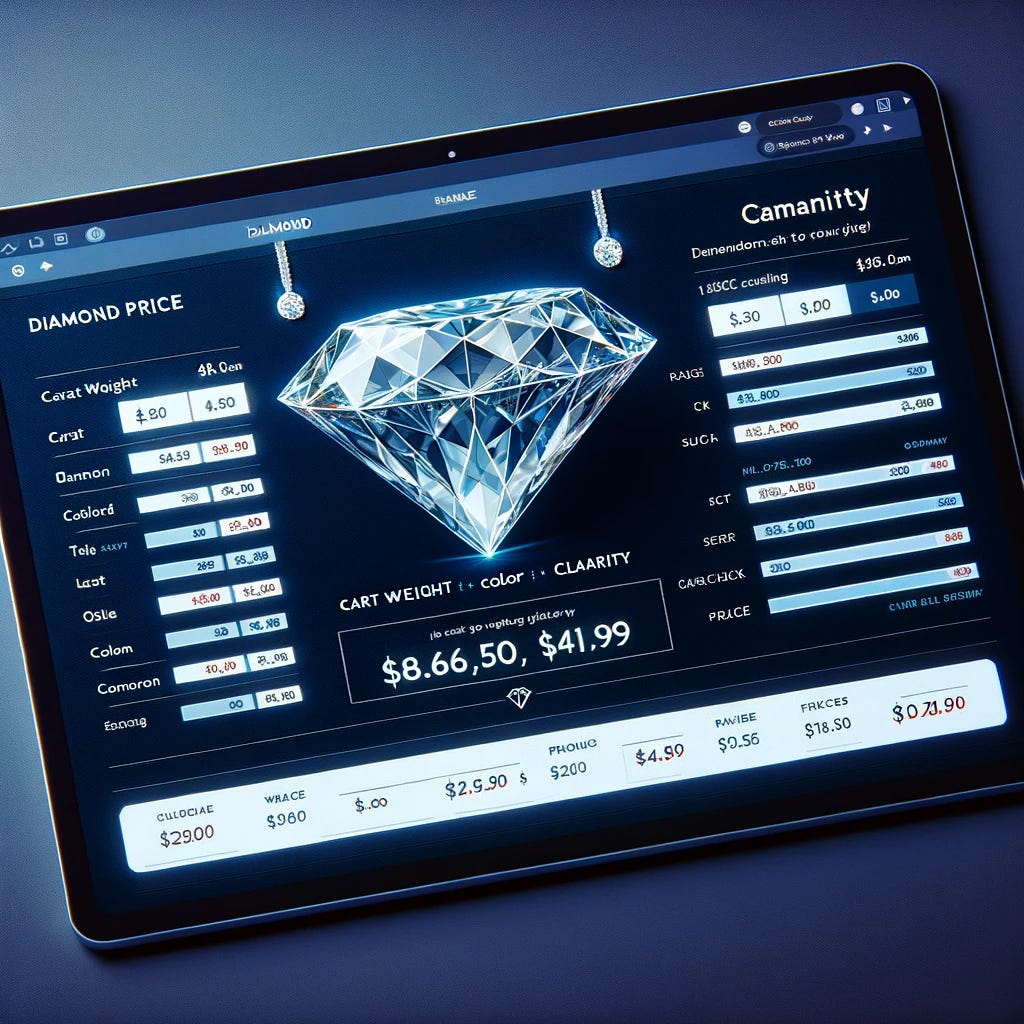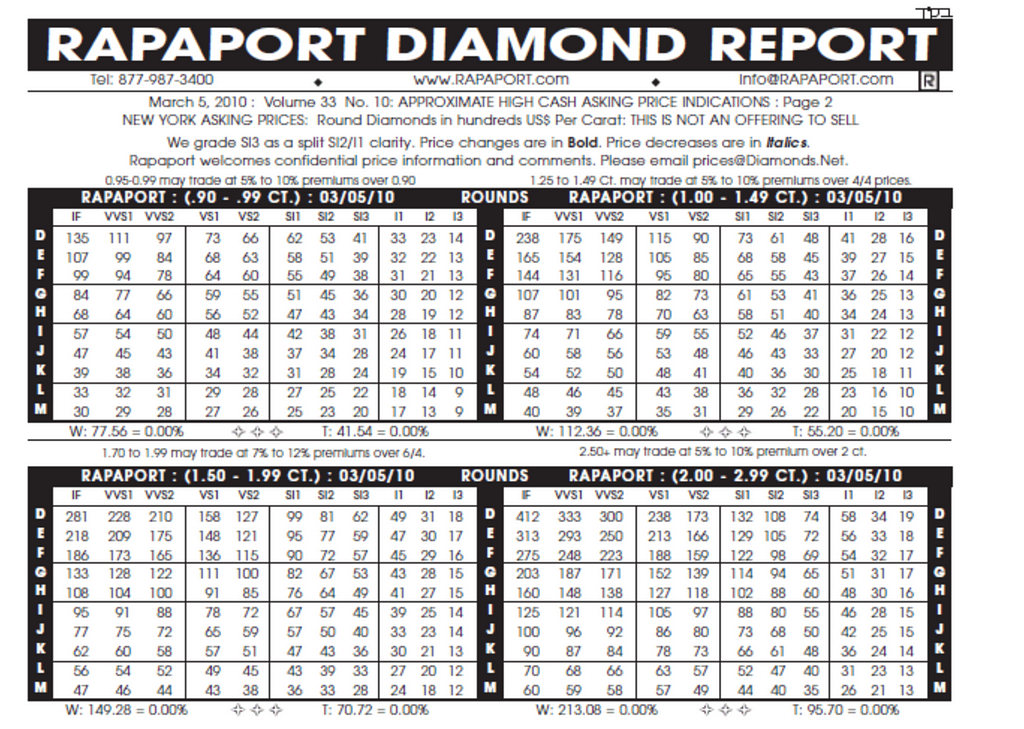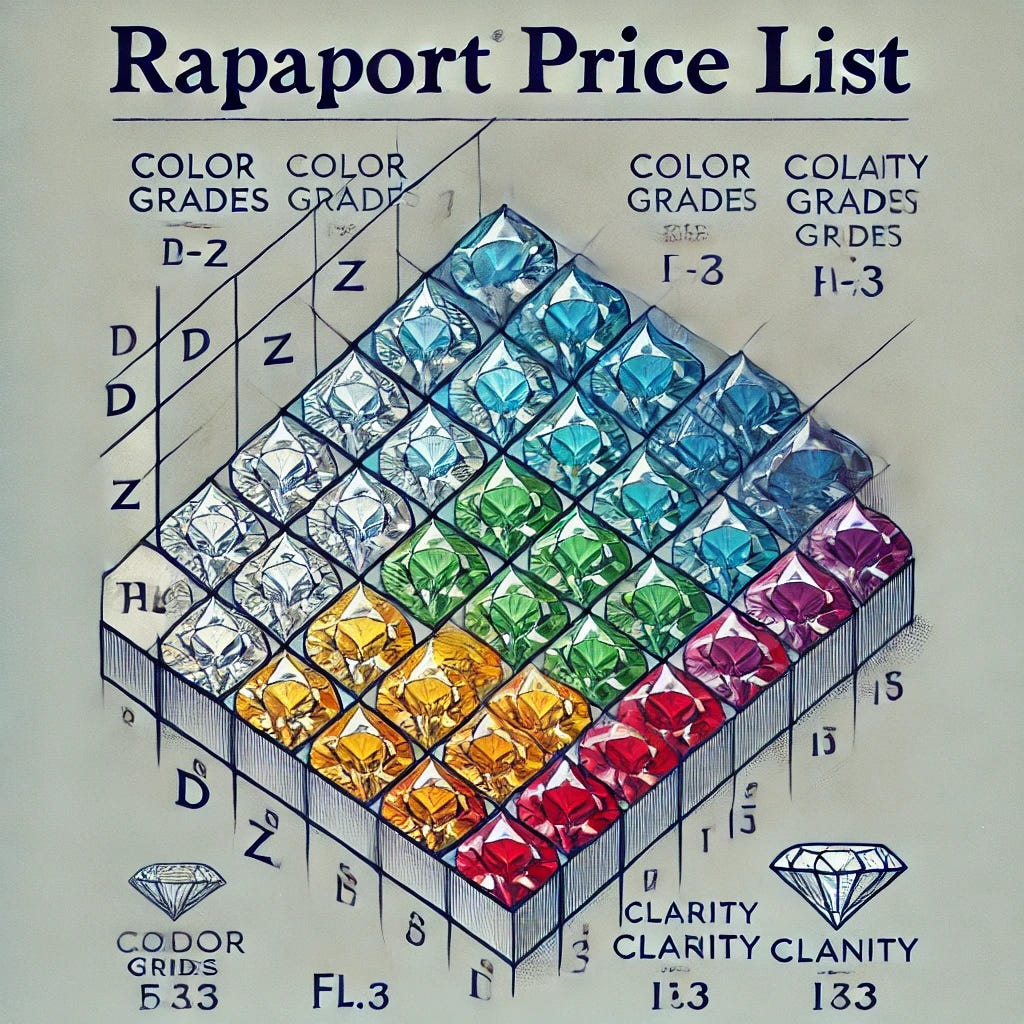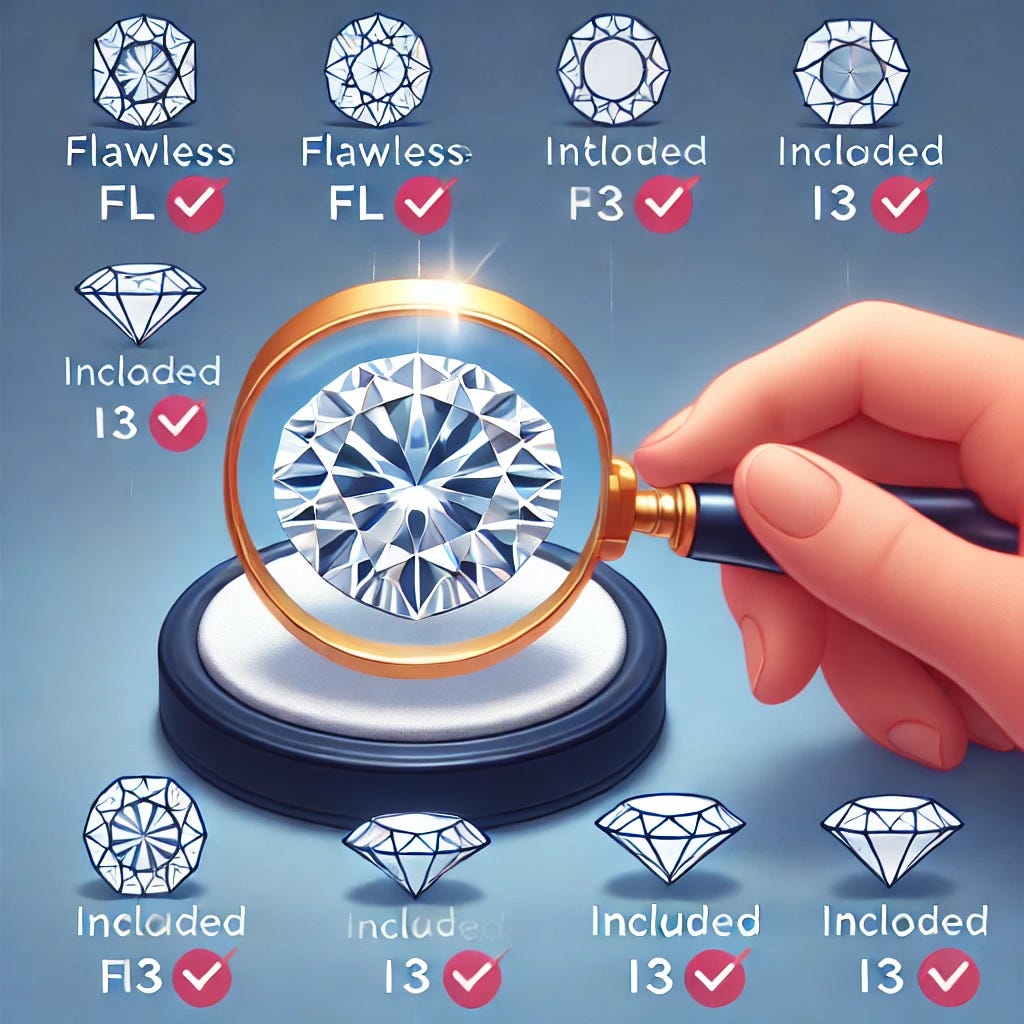
Understanding Rapaport and Diamond Pricing: Integration and Testing in Software

Introduction
The diamond industry relies heavily on standardized pricing mechanisms to ensure fair trade and consistency. One of the most influential and widely used tools for diamond pricing is the Rapaport Price List, often referred to as the “Rap sheet.” This article delves into the fundamentals of Rapaport pricing, explores how diamond pricing is integrated into software systems, discusses strategies for effectively testing these integrations, and provides example test cases.
Understanding Rapaport Pricing
The Rapaport Price List, published weekly, serves as a benchmark for pricing diamonds based on various attributes such as carat weight, color, clarity, and cut. It is a matrix that lists prices per carat for diamonds of different qualities. The key attributes affecting the price include:
- Carat Weight: The size of the diamond.
- Color: Graded from D (colorless) to Z (light color).
- Clarity: A measure of the internal and external imperfections, graded from Flawless (FL) to Included (I3).
- Cut: The quality of the diamond’s proportions, symmetry, and polish.
Color Grading
Diamond color is graded on a scale from D to Z by the Gemological Institute of America (GIA):
- D-F (Colorless): These diamonds are the rarest and most expensive. They have no visible color.
- G-J (Near Colorless): These diamonds have slight traces of color that are typically not visible to the untrained eye.
- K-M (Faint Color): These diamonds have a faint yellow or brown tint that is noticeable.
- N-R (Very Light Color): These diamonds have noticeable color.
- S-Z (Light Color): These diamonds have a more intense yellow or brown color.

Clarity Grading
Clarity is graded based on the presence of internal and external imperfections:
- FL (Flawless): No inclusions or blemishes visible under 10x magnification.
- IF (Internally Flawless): No inclusions visible under 10x magnification, only minor blemishes.
- VVS1 and VVS2 (Very, Very Slightly Included): Inclusions are difficult to detect under 10x magnification.
- VS1 and VS2 (Very Slightly Included): Minor inclusions that are somewhat easy to detect under 10x magnification.
- SI1 and SI2 (Slightly Included): Noticeable inclusions under 10x magnification.
- I1, I2, and I3 (Included): Obvious inclusions under 10x magnification, which may affect transparency and brilliance.
Impact of Color, Clarity, and Carat Weight on Price
In general, the higher the color and clarity grades and carat weight of a diamond, the higher its price will be. For example:
- A D-color diamond (colorless) will command a higher price than a G-color diamond (near colorless).
- A Flawless (FL) diamond will be more expensive than a Very Slightly Included (VS2) diamond.
- Larger diamonds (higher carat weight) are significantly more valuable than smaller diamonds of the same quality.
This relationship between color, clarity, and carat weight is critical in determining the overall price of a diamond.
Calculating Price Using the Rapaport Price List
The Rapaport Price List provides prices per carat for diamonds based on their color and clarity grades, as well as their carat weight. Let’s walk through an example using the provided image of the Rapaport Diamond Report.
Assume you have a diamond with the following attributes:
- Carat Weight: 1.5 carats
- Color: G
- Clarity: VS2

We will refer to the section of the Rapaport Price List that corresponds to diamonds weighing between 1.50 and 1.99 carats.
- Locate the Appropriate Section: In the provided Rapaport Diamond Report, find the section labeled “RAPAPORT: (1.50–1.99 CT.)”.
- Identify the Relevant Matrix: Within this section, look at the row for color G and the column for clarity VS2.
- From the image, the price per carat for a diamond with 1.50–1.99 carats, color G, and clarity VS2 is $111.
-
Calculate the Total Price: Multiply the price per carat by the carat weight of the diamond.
Total Price=Price per Carat×Carat Weight
Price=$111×1.5=$166.50
So, the total price for a 1.5-carat diamond with a G color grade and VS2 clarity grade would be $166.50.
Additional Examples:
- Example 2: Diamond with 1.5 carats, color D, and clarity IF
- Price per Carat: $281
- Total Price: $281 \times 1.5 = $421.50
- Example 3: Diamond with 1.5 carats, color J, and clarity SI1
- Price per Carat: $59
- Total Price: $59 \times 1.5 = $88.50
- Example 4: Diamond with 1.5 carats, color F, and clarity VVS2
- Price per Carat: $210
- Total Price: $210 \times 1.5 = $315.00
- Example 5: Diamond with 1.5 carats, color I, and clarity I1
- Price per Carat: $27
- Total Price: $27 \times 1.5 = $40.50
These examples illustrate how the price per carat varies significantly based on the color and clarity of the diamond, and how this price can be calculated using the Rapaport Price List. By understanding these principles, jewelers and consumers can make informed decisions about diamond pricing.

Diamond Pricing in Software
Integrating diamond pricing into software involves creating algorithms that can compute the price of a diamond based on the Rapaport price list and additional market factors. Here’s how it can be typically implemented:
- Data Ingestion: The latest Rapaport price list is ingested into the system, often in a CSV or Excel format.
- Database Storage: The price list is stored in a structured database, allowing efficient querying and retrieval.
- Pricing Algorithms: Algorithms are developed to calculate the price of a diamond based on its attributes (carat, color, clarity, cut) and the corresponding Rapaport prices.
- User Interface: A user-friendly interface allows jewelers and consumers to input diamond specifications and retrieve prices.
Challenges in Integration
Integrating diamond pricing into software comes with several challenges:
- Data Accuracy: Ensuring that the data from the Rapaport price list is accurately ingested and updated.
- Complex Algorithms: Developing algorithms that correctly apply the price list and any additional market adjustments.
- Performance: Ensuring the system performs efficiently, especially when processing large volumes of data.
Testing the Integration
Testing the integration of diamond pricing in software is crucial to ensure accuracy, reliability, and performance. Here’s a structured approach to testing:
Unit Testing:
- Data Ingestion: Verify that the Rapaport price list is correctly ingested and stored in the database.
- Algorithm Accuracy: Test individual functions and algorithms to ensure they correctly calculate prices based on given inputs.
Integration Testing:
- End-to-End Scenarios: Test the entire workflow from data ingestion to price calculation and display.
- Data Consistency: Ensure that updates to the Rapaport price list are accurately reflected in the software.
Performance Testing:
- Load Testing: Simulate high volumes of requests to ensure the system can handle peak loads.
- Response Time: Measure the time taken to calculate and display prices to ensure it meets performance criteria.
Regression Testing:
- Consistency Checks: Ensure that new updates or changes to the system do not break existing functionality.
- Comparison with Manual Calculations: Periodically compare automated pricing results with manual calculations to validate accuracy.
User Acceptance Testing (UAT):
- Real-world Scenarios: Engage end-users to test the system using real-world scenarios and provide feedback.
- Usability: Assess the user interface for ease of use and intuitive interaction.
Example Test Cases
Here are some example test cases to validate the integration of diamond pricing using the Rapaport Price List:
Test Case 1: Data Ingestion
- Objective: Verify that the Rapaport price list is correctly ingested into the system.
- Steps:
- Upload the Rapaport price list in CSV format.
- Check the database to ensure the data is correctly stored.
- Expected Result: The database should reflect the exact data from the uploaded Rapaport price list.
Test Case 2: Basic Price Calculation
- Objective: Verify that the system correctly calculates the price for a given diamond.
- Steps:
- Input a diamond with 1.5 carats, G color, and VS2 clarity.
- Retrieve the calculated price.
- Expected Result: The system should return a price of $10,500.
Test Case 3: Edge Case for Carat Weight
- Objective: Verify the system’s handling of edge cases for carat weight.
- Steps:
- Input a diamond with 0.99 carats, G color, and VS2 clarity.
- Retrieve the calculated price.
- Expected Result: The system should correctly calculate the price based on the closest lower weight bracket in the Rapaport price list.
Test Case 4: Data Consistency After Update
- Objective: Ensure that updating the Rapaport price list reflects accurately in the pricing calculations.
- Steps:
- Update the Rapaport price list with new prices.
- Input a diamond with known attributes and compare the new calculated price with the updated list.
- Expected Result: The new price should reflect the updated Rapaport list.
Test Case 5: Performance Under Load
- Objective: Test the system’s performance under high load conditions.
- Steps:
- Simulate 1,000 concurrent users calculating diamond prices.
- Monitor system performance metrics.
- Expected Result: The system should handle the load without significant performance degradation.

Conclusion
Integrating Rapaport pricing into software systems revolutionizes the way diamond prices are calculated and managed, providing accuracy and efficiency. However, ensuring the reliability of such integrations demands a robust testing strategy. By following structured testing methodologies, leveraging appropriate tools, and implementing comprehensive test cases, developers can ensure that their diamond pricing systems are accurate, reliable, and performant, thereby gaining the trust of users in the diamond trading industry.
For further assistance with testing your diamond pricing application or any other integration, feel free to connect with me on LinkedIn. I’m here to help ensure your application runs smoothly and accurately.
